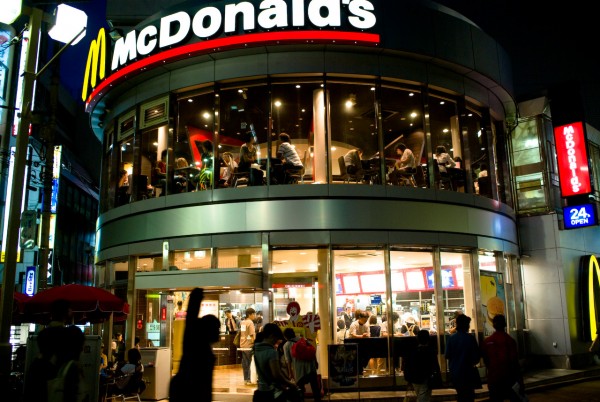McDonald’s sales dipping more in the U.S. than in any other country
01/30/2017 / By Daniel Barker

It seems that no matter what McDonald’s does to hang on to its American market share, customers are staying away in droves.
McDonald’s Corporation shares were down 0.5 percent after the company’s 2016 fourth-quarter report was released on January 23. Sales were down at U.S. McDonald’s franchises – despite their efforts to boost business with an all-day breakfast menu.
Sales dropped 1.3 percent for established franchises in the U.S. (those open for 13 months or more) in the last quarter of 2016, and overall sales have dropped 10 percent over the past four years in a country that is still considered McDonald’s most profitable market.
The decline in 2016 sales was attributed to a “tough comparison” to 2015, when the company first introduced the all-day breakfast menu – a strategy that succeeded at first, but failed to deliver the consistent growth the company had hoped for.
“These changes were supposed to drive a steady and sustainable uplift in [consumer] spending rather than a one-off spike in sales, but it is increasingly clear that this strategy is not delivering,” said one retail analyst.
Experts also point to other factors responsible for lagging sales for the world’s largest hamburger chain.
From Reuters:
“McDonald’s and other U.S. restaurant operators are battling competition from convenience stores, supermarkets and meal kit delivery services such as Blue Apron.
“The challenge from grocers has been particularly daunting.
“Supermarkets have been passing lower food costs on to shoppers, while restaurants are raising menu prices to offset the impact of minimum wage increases.”
McDonald’s CFO Kevin Ozan told Reuters that he is “mindful of the disparity” in prices, and said that the company plans to increase sales by “speeding up service, offering limited-time burger specials, testing home delivery, remodeling restaurants and investing in technology like automated ordering and payment through self-service kiosks and mobile devices.”
What McDonald’s executives and financial analysts may not be taking into account is the fact that Americans are increasingly aware of the dangers of eating junk food, and are seeking healthier alternatives.
New chains are popping up that offer healthy food at fast food prices – and served as quickly as a Big Mac and fries.
The age of the fast food burger may not be over just yet, but customers are demanding more for their money these days. In other words, why buy a meal consisting of various mystery meats and processed ingredients, and loaded with extra salt and sugar, when you can go down the block and find a freshly-prepared, ready-to-eat healthy alternative for roughly the same price?
But McDonald’s executives don’t appear to see things that way. The same week that the company’s poor last-quarter U.S. sales figures were released, the burger giant introduced its new Grand Mac – a ⅓ pound version of its longtime staple Big Mac sandwich. It’s larger, cheesier and more fattening than its predecessor, which means that McDonald’s apparently believes that the way out of its downward sales spiral is to make burgers even more unhealthy than the ones it was already serving.
It’s a sign that perhaps the chain has truly run out of ideas regarding how to adapt to the changing tastes and budgetary concerns of the average American. And perhaps it’s only a matter of time before McDonald’s and other giant fast food chains either completely change their approach or go out of business altogether. (RELATED: Stay informed about fast food ingredients at Ingredients.news.)
The demand for healthy food is creating new markets and helping to drive down the price of natural, sustainable organic products. If McDonald’s moved away from using processed ingredients – plus loads of preservatives and added salt and sugar – then maybe they could continue serving “billions and billions” in America and elsewhere.
Otherwise, the company’s glory days may have come to an end for good.
Sources:
Tagged Under: Clean Eating, fast food, McDonald's




















